Yun Zhou
Erased, But Not Forgotten: Erased Rectified Flow Transformers Still Remain Unsafe Under Concept Attack
Oct 01, 2025Abstract:Recent advances in text-to-image (T2I) diffusion models have enabled impressive generative capabilities, but they also raise significant safety concerns due to the potential to produce harmful or undesirable content. While concept erasure has been explored as a mitigation strategy, most existing approaches and corresponding attack evaluations are tailored to Stable Diffusion (SD) and exhibit limited effectiveness when transferred to next-generation rectified flow transformers such as Flux. In this work, we present ReFlux, the first concept attack method specifically designed to assess the robustness of concept erasure in the latest rectified flow-based T2I framework. Our approach is motivated by the observation that existing concept erasure techniques, when applied to Flux, fundamentally rely on a phenomenon known as attention localization. Building on this insight, we propose a simple yet effective attack strategy that specifically targets this property. At its core, a reverse-attention optimization strategy is introduced to effectively reactivate suppressed signals while stabilizing attention. This is further reinforced by a velocity-guided dynamic that enhances the robustness of concept reactivation by steering the flow matching process, and a consistency-preserving objective that maintains the global layout and preserves unrelated content. Extensive experiments consistently demonstrate the effectiveness and efficiency of the proposed attack method, establishing a reliable benchmark for evaluating the robustness of concept erasure strategies in rectified flow transformers.
ReferSplat: Referring Segmentation in 3D Gaussian Splatting
Aug 11, 2025Abstract:We introduce Referring 3D Gaussian Splatting Segmentation (R3DGS), a new task that aims to segment target objects in a 3D Gaussian scene based on natural language descriptions, which often contain spatial relationships or object attributes. This task requires the model to identify newly described objects that may be occluded or not directly visible in a novel view, posing a significant challenge for 3D multi-modal understanding. Developing this capability is crucial for advancing embodied AI. To support research in this area, we construct the first R3DGS dataset, Ref-LERF. Our analysis reveals that 3D multi-modal understanding and spatial relationship modeling are key challenges for R3DGS. To address these challenges, we propose ReferSplat, a framework that explicitly models 3D Gaussian points with natural language expressions in a spatially aware paradigm. ReferSplat achieves state-of-the-art performance on both the newly proposed R3DGS task and 3D open-vocabulary segmentation benchmarks. Dataset and code are available at https://github.com/heshuting555/ReferSplat.
Black-Box Visual Prompt Engineering for Mitigating Object Hallucination in Large Vision Language Models
Apr 30, 2025Abstract:Large Vision Language Models (LVLMs) often suffer from object hallucination, which undermines their reliability. Surprisingly, we find that simple object-based visual prompting -- overlaying visual cues (e.g., bounding box, circle) on images -- can significantly mitigate such hallucination; however, different visual prompts (VPs) vary in effectiveness. To address this, we propose Black-Box Visual Prompt Engineering (BBVPE), a framework to identify optimal VPs that enhance LVLM responses without needing access to model internals. Our approach employs a pool of candidate VPs and trains a router model to dynamically select the most effective VP for a given input image. This black-box approach is model-agnostic, making it applicable to both open-source and proprietary LVLMs. Evaluations on benchmarks such as POPE and CHAIR demonstrate that BBVPE effectively reduces object hallucination.
Collaborative LLM Numerical Reasoning with Local Data Protection
Apr 01, 2025Abstract:Numerical reasoning over documents, which demands both contextual understanding and logical inference, is challenging for low-capacity local models deployed on computation-constrained devices. Although such complex reasoning queries could be routed to powerful remote models like GPT-4, exposing local data raises significant data leakage concerns. Existing mitigation methods generate problem descriptions or examples for remote assistance. However, the inherent complexity of numerical reasoning hinders the local model from generating logically equivalent queries and accurately inferring answers with remote guidance. In this paper, we present a model collaboration framework with two key innovations: (1) a context-aware synthesis strategy that shifts the query domains while preserving logical consistency; and (2) a tool-based answer reconstruction approach that reuses the remote-generated problem-solving pattern with code snippets. Experimental results demonstrate that our method achieves better reasoning accuracy than solely using local models while providing stronger data protection than fully relying on remote models. Furthermore, our method improves accuracy by 16.2% - 43.6% while reducing data leakage by 2.3% - 44.6% compared to existing data protection approaches.
A Systematic Survey of Automatic Prompt Optimization Techniques
Feb 24, 2025Abstract:Since the advent of large language models (LLMs), prompt engineering has been a crucial step for eliciting desired responses for various Natural Language Processing (NLP) tasks. However, prompt engineering remains an impediment for end users due to rapid advances in models, tasks, and associated best practices. To mitigate this, Automatic Prompt Optimization (APO) techniques have recently emerged that use various automated techniques to help improve the performance of LLMs on various tasks. In this paper, we present a comprehensive survey summarizing the current progress and remaining challenges in this field. We provide a formal definition of APO, a 5-part unifying framework, and then proceed to rigorously categorize all relevant works based on their salient features therein. We hope to spur further research guided by our framework.
Machine Learning for Raman Spectroscopy-based Cyber-Marine Fish Biochemical Composition Analysis
Sep 29, 2024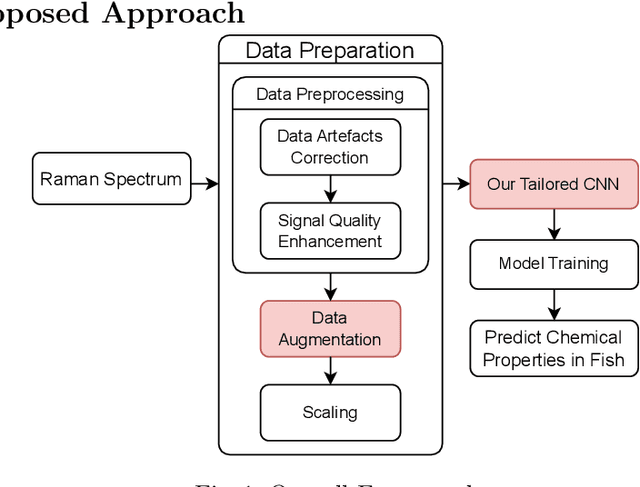

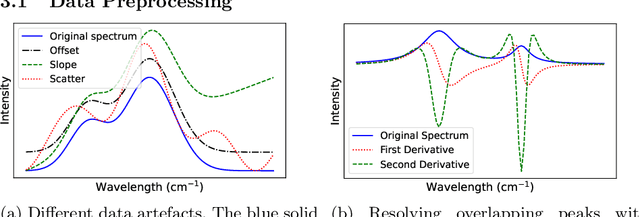
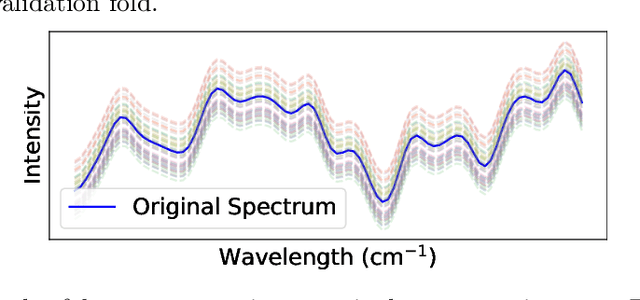
Abstract:The rapid and accurate detection of biochemical compositions in fish is a crucial real-world task that facilitates optimal utilization and extraction of high-value products in the seafood industry. Raman spectroscopy provides a promising solution for quickly and non-destructively analyzing the biochemical composition of fish by associating Raman spectra with biochemical reference data using machine learning regression models. This paper investigates different regression models to address this task and proposes a new design of Convolutional Neural Networks (CNNs) for jointly predicting water, protein, and lipids yield. To the best of our knowledge, we are the first to conduct a successful study employing CNNs to analyze the biochemical composition of fish based on a very small Raman spectroscopic dataset. Our approach combines a tailored CNN architecture with the comprehensive data preparation procedure, effectively mitigating the challenges posed by extreme data scarcity. The results demonstrate that our CNN can significantly outperform two state-of-the-art CNN models and multiple traditional machine learning models, paving the way for accurate and automated analysis of fish biochemical composition.
DAGAM: A Domain Adversarial Graph Attention Model for Subject Independent EEG-Based Emotion Recognition
Feb 27, 2022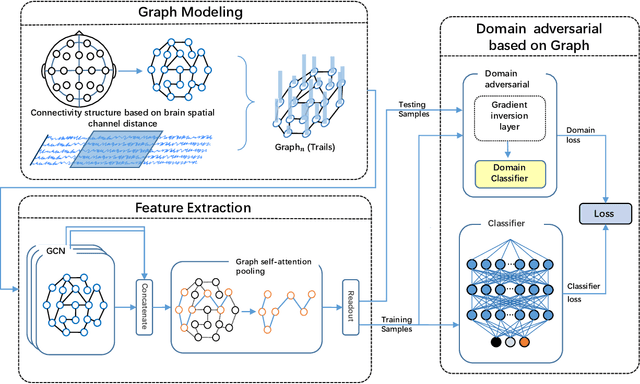
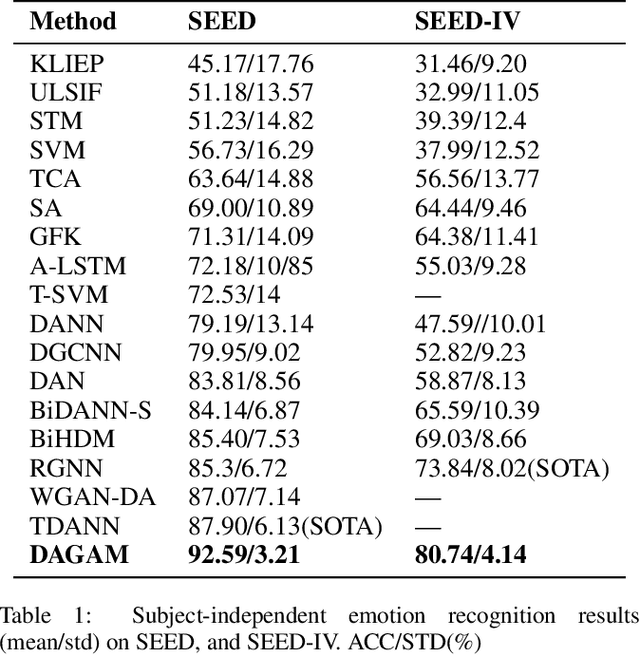
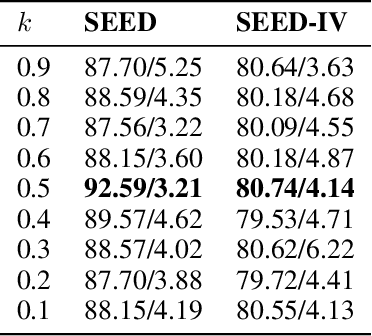
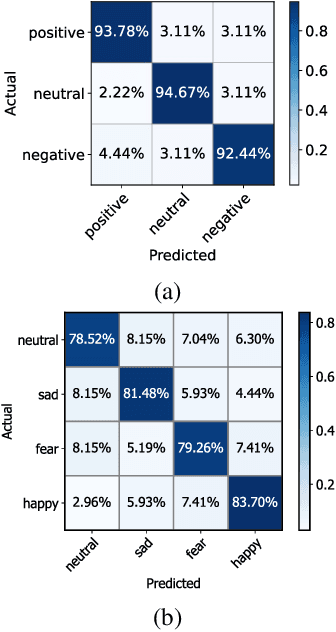
Abstract:One of the most significant challenges of EEG-based emotion recognition is the cross-subject EEG variations, leading to poor performance and generalizability. This paper proposes a novel EEG-based emotion recognition model called the domain adversarial graph attention model (DAGAM). The basic idea is to generate a graph to model multichannel EEG signals using biological topology. Graph theory can topologically describe and analyze relationships and mutual dependency between channels of EEG. Then, unlike other graph convolutional networks, self-attention pooling is applied to benefit salient EEG feature extraction from the graph, which effectively improves the performance. Finally, after graph pooling, the domain adversarial based on the graph is employed to identify and handle EEG variation across subjects, efficiently reaching good generalizability. We conduct extensive evaluations on two benchmark datasets (SEED and SEED IV) and obtain state-of-the-art results in subject-independent emotion recognition. Our model boosts the SEED accuracy to 92.59% (4.69% improvement) with the lowest standard deviation of 3.21% (2.92% decrements) and SEED IV accuracy to 80.74% (6.90% improvement) with the lowest standard deviation of 4.14% (3.88% decrements) respectively.
Rethinking Feature Uncertainty in Stochastic Neural Networks for Adversarial Robustness
Jan 01, 2022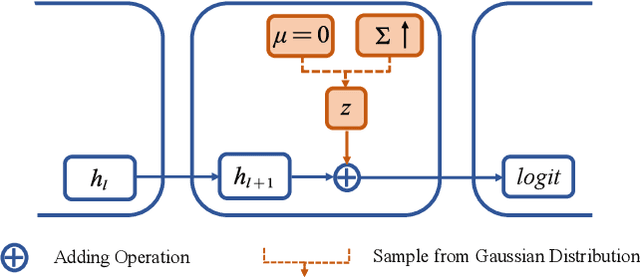
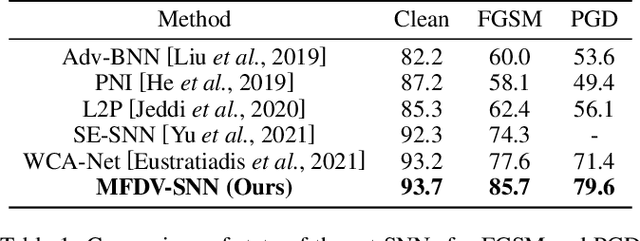
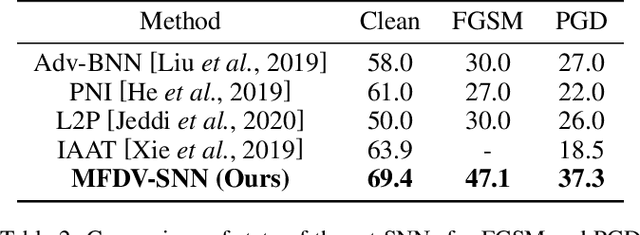

Abstract:It is well-known that deep neural networks (DNNs) have shown remarkable success in many fields. However, when adding an imperceptible magnitude perturbation on the model input, the model performance might get rapid decrease. To address this issue, a randomness technique has been proposed recently, named Stochastic Neural Networks (SNNs). Specifically, SNNs inject randomness into the model to defend against unseen attacks and improve the adversarial robustness. However, existed studies on SNNs mainly focus on injecting fixed or learnable noises to model weights/activations. In this paper, we find that the existed SNNs performances are largely bottlenecked by the feature representation ability. Surprisingly, simply maximizing the variance per dimension of the feature distribution leads to a considerable boost beyond all previous methods, which we named maximize feature distribution variance stochastic neural network (MFDV-SNN). Extensive experiments on well-known white- and black-box attacks show that MFDV-SNN achieves a significant improvement over existing methods, which indicates that it is a simple but effective method to improve model robustness.
Exploring Common and Individual Characteristics of Students via Matrix Recovering
Oct 23, 2020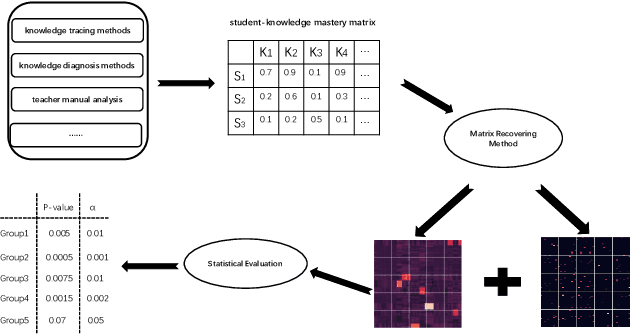
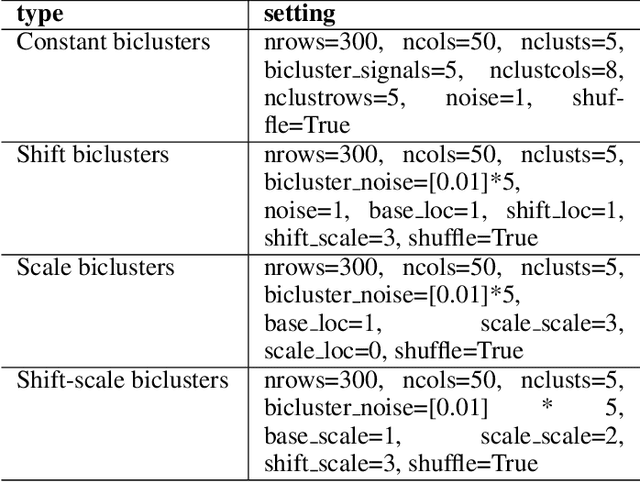
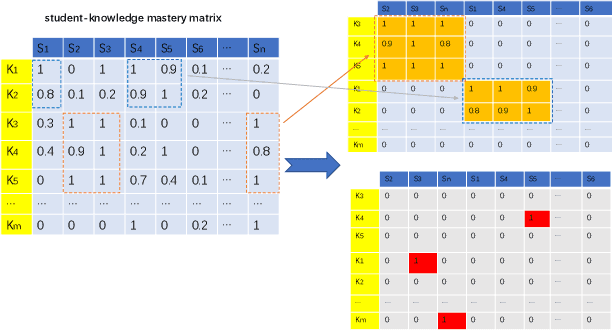
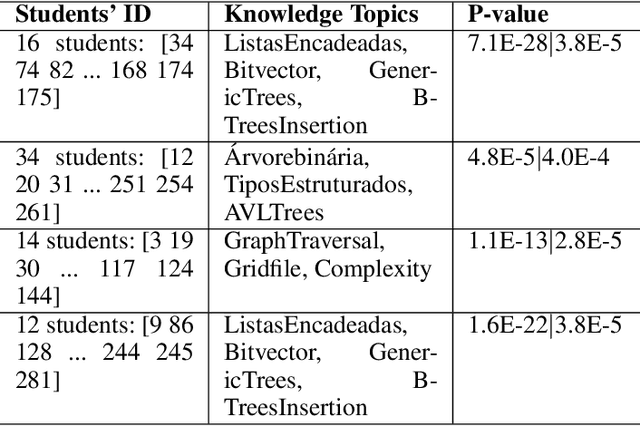
Abstract:Balancing group teaching and individual mentoring is an important issue in education area. The nature behind this issue is to explore common characteristics shared by multiple students and individual characteristics for each student. Biclustering methods have been proved successful for detecting meaningful patterns with the goal of driving group instructions based on students' characteristics. However, these methods ignore the individual characteristics of students as they only focus on common characteristics of students. In this article, we propose a framework to detect both group characteristics and individual characteristics of students simultaneously. We assume that the characteristics matrix of students' is composed of two parts: one is a low-rank matrix representing the common characteristics of students; the other is a sparse matrix representing individual characteristics of students. Thus, we treat the balancing issue as a matrix recovering problem. The experiment results show the effectiveness of our method. Firstly, it can detect meaningful biclusters that are comparable with the state-of-the-art biclutering algorithms. Secondly, it can identify individual characteristics for each student simultaneously. Both the source code of our algorithm and the real datasets are available upon request.
DiPair: Fast and Accurate Distillation for Trillion-Scale Text Matching and Pair Modeling
Oct 07, 2020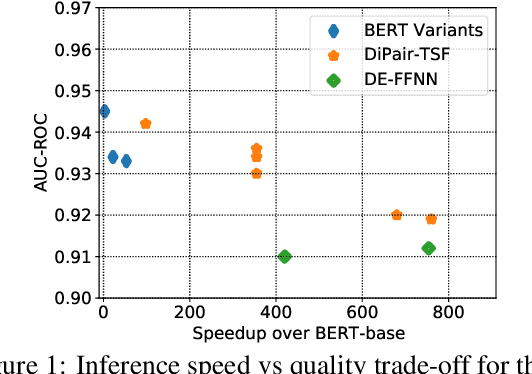

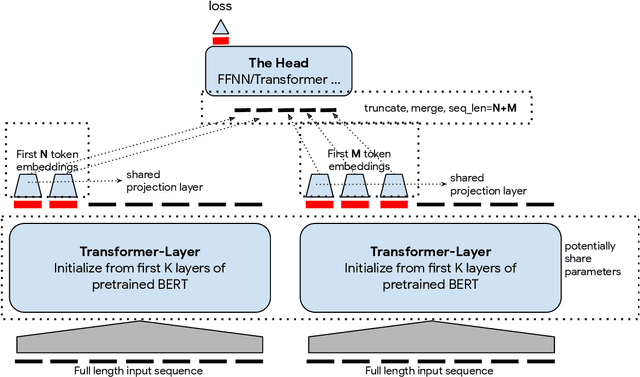
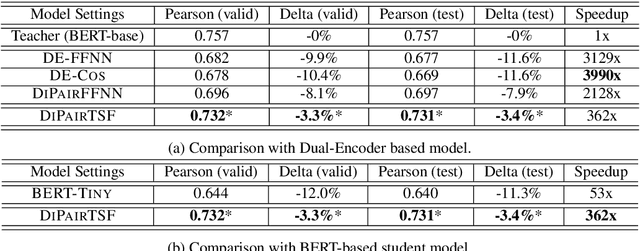
Abstract:Pre-trained models like BERT (Devlin et al., 2018) have dominated NLP / IR applications such as single sentence classification, text pair classification, and question answering. However, deploying these models in real systems is highly non-trivial due to their exorbitant computational costs. A common remedy to this is knowledge distillation (Hinton et al., 2015), leading to faster inference. However -- as we show here -- existing works are not optimized for dealing with pairs (or tuples) of texts. Consequently, they are either not scalable or demonstrate subpar performance. In this work, we propose DiPair -- a novel framework for distilling fast and accurate models on text pair tasks. Coupled with an end-to-end training strategy, DiPair is both highly scalable and offers improved quality-speed tradeoffs. Empirical studies conducted on both academic and real-world e-commerce benchmarks demonstrate the efficacy of the proposed approach with speedups of over 350x and minimal quality drop relative to the cross-attention teacher BERT model.
 Add to Chrome
Add to Chrome Add to Firefox
Add to Firefox Add to Edge
Add to Edge